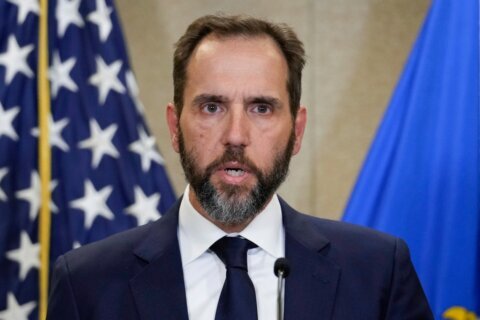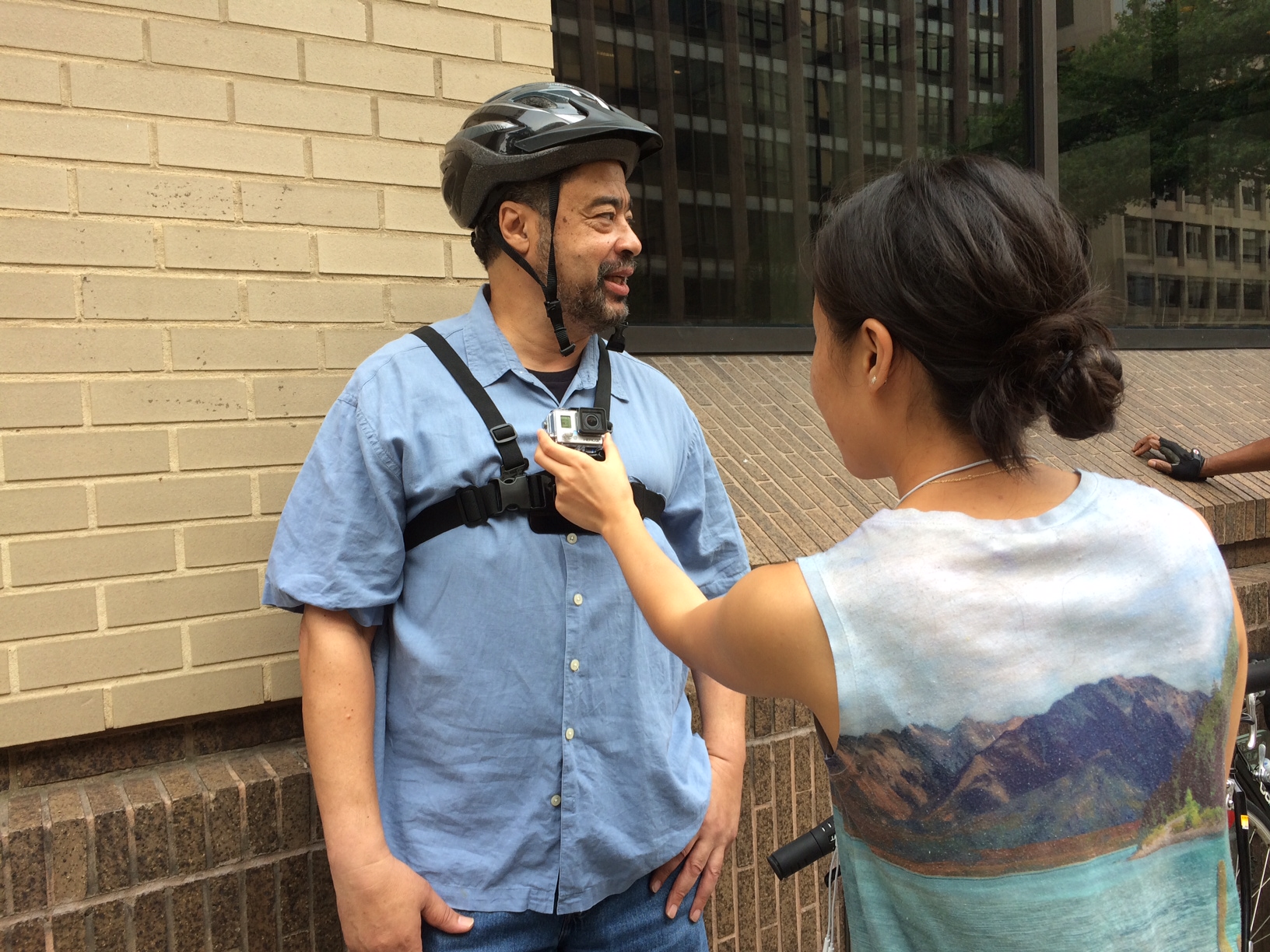
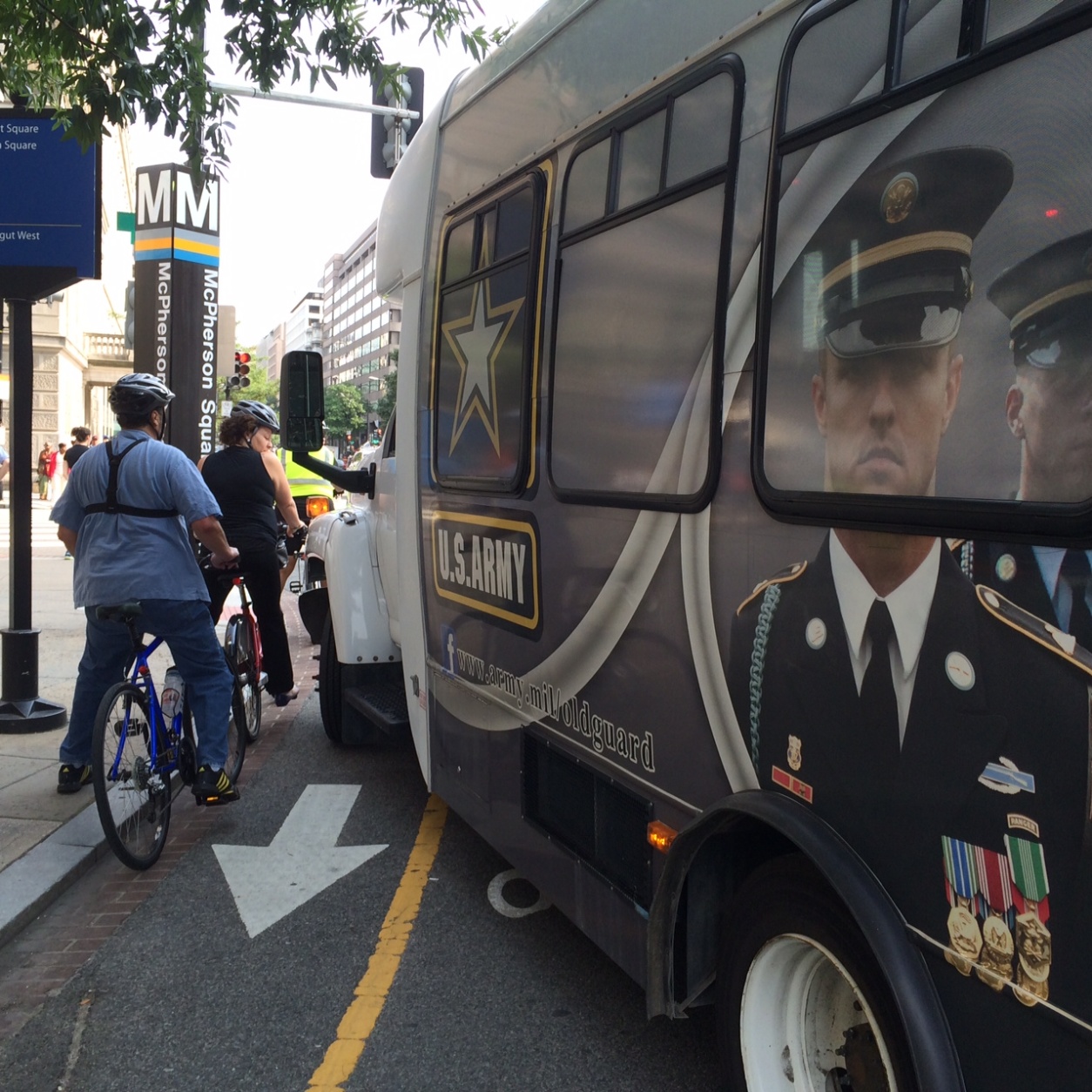

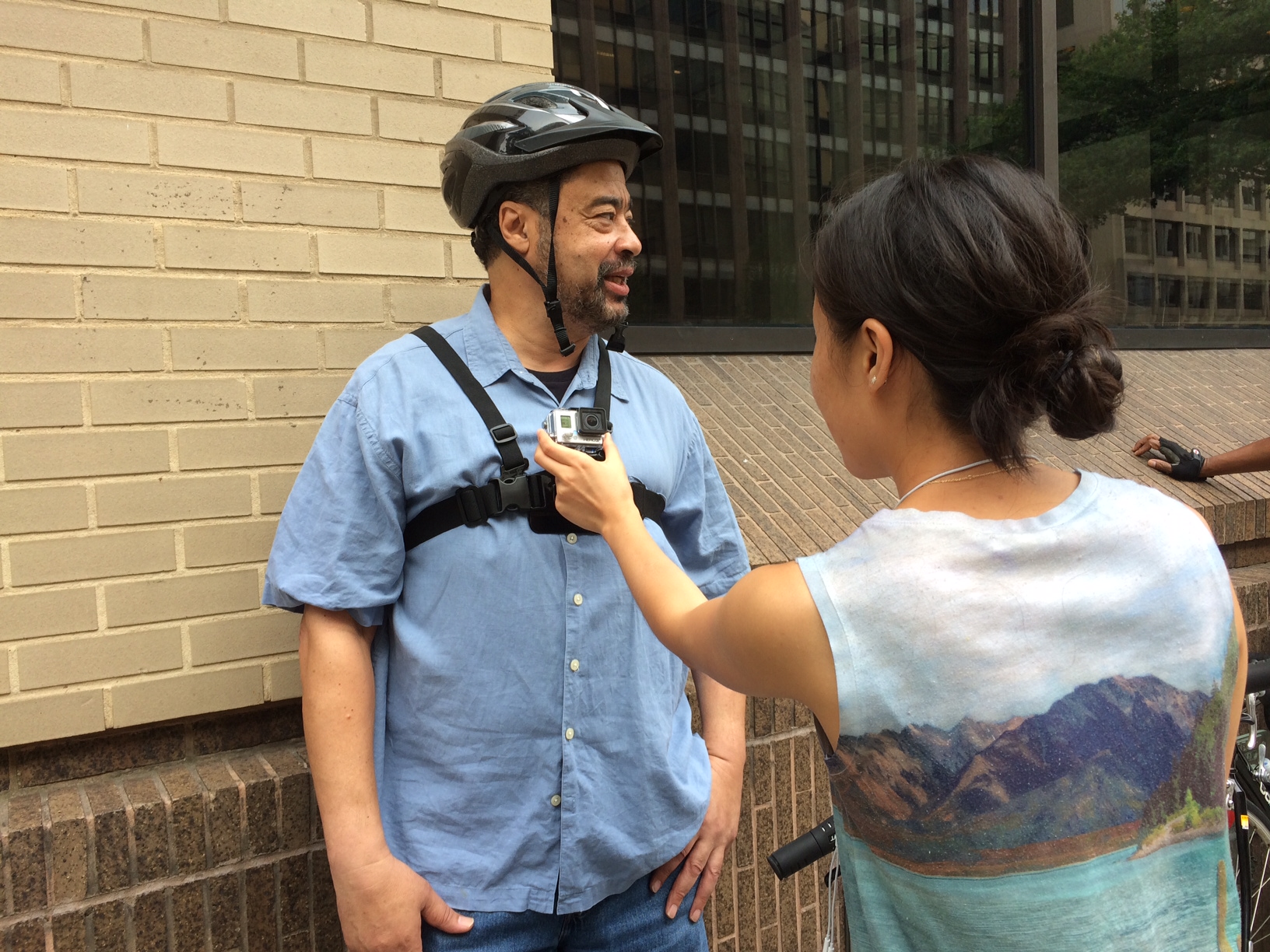
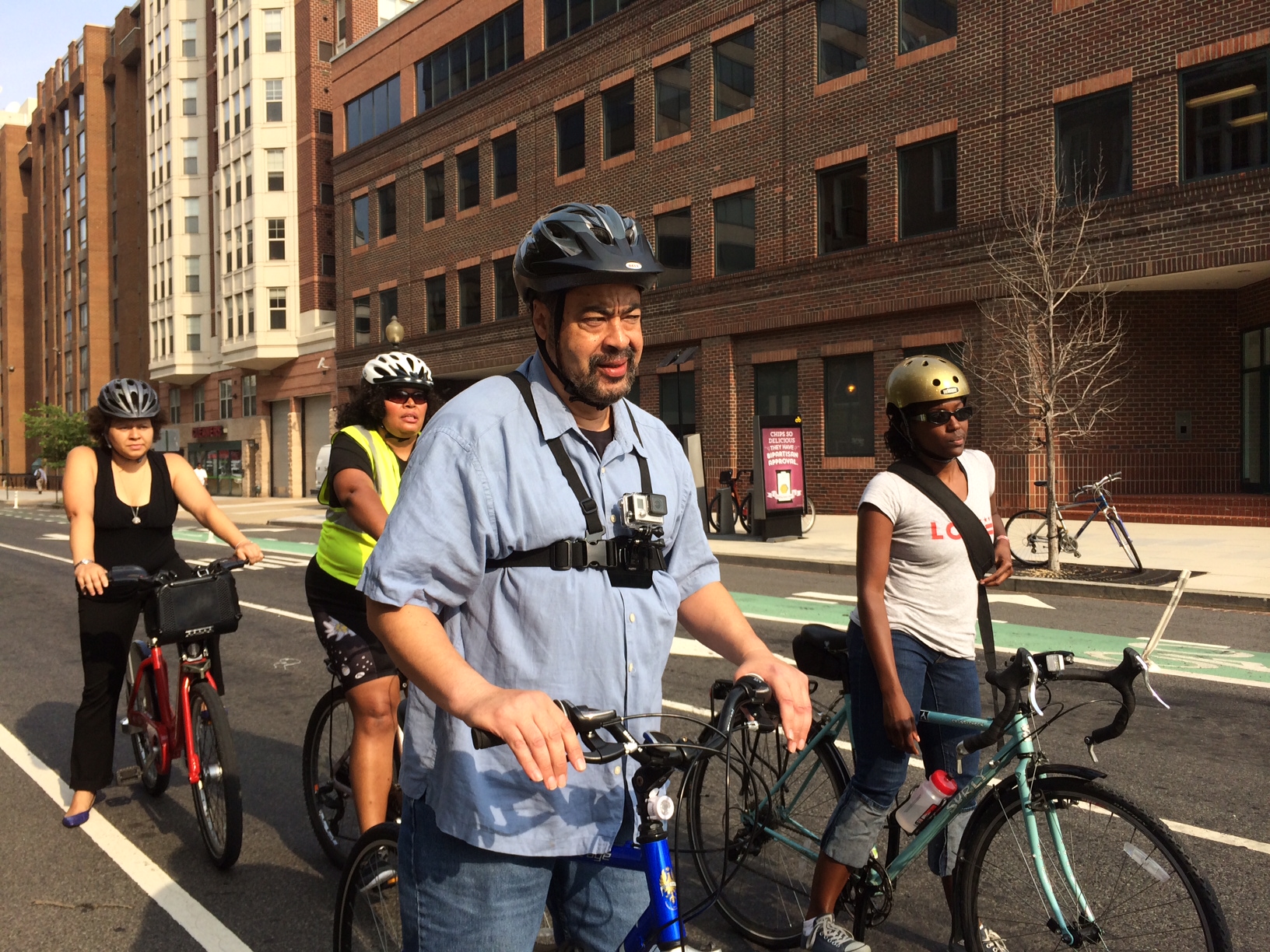
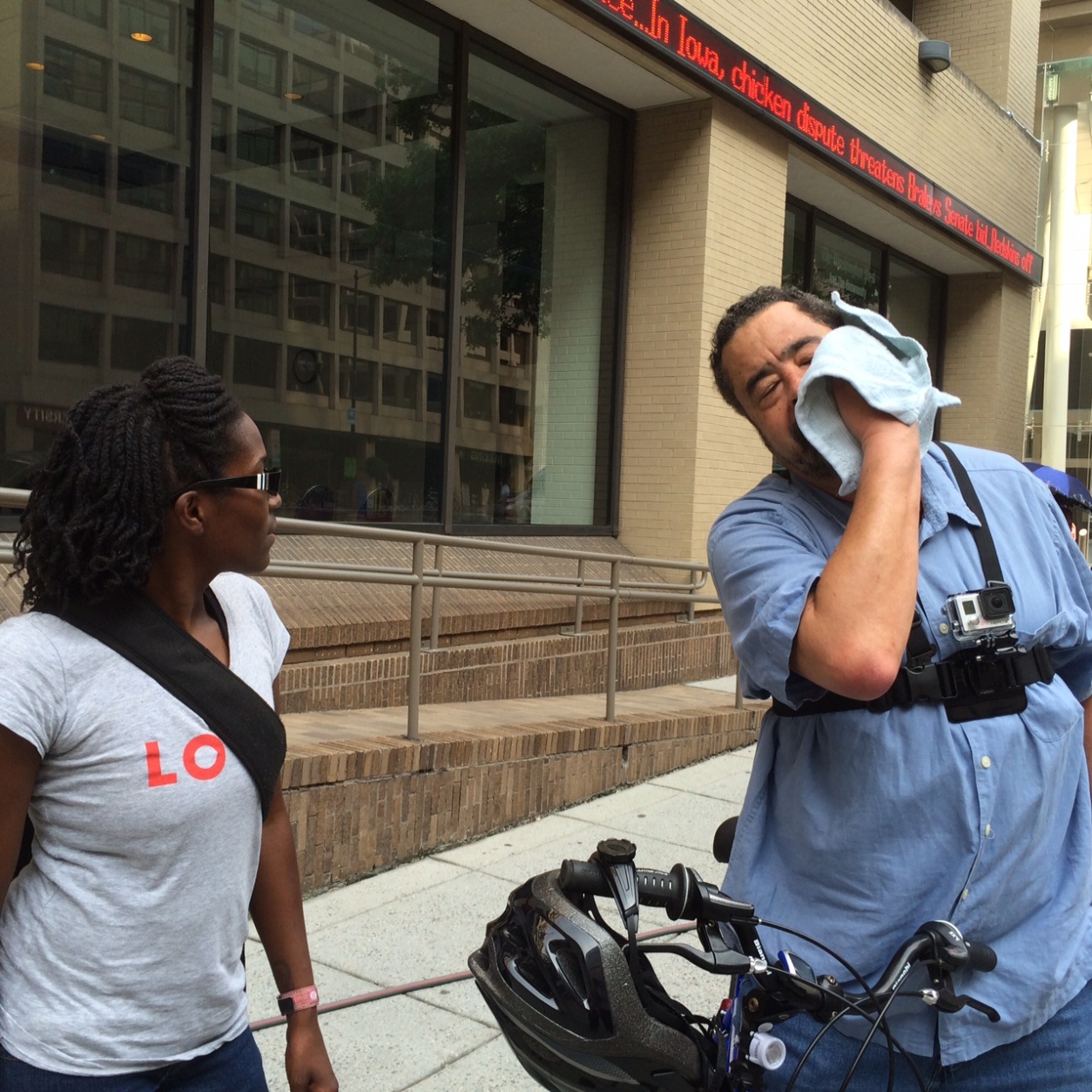
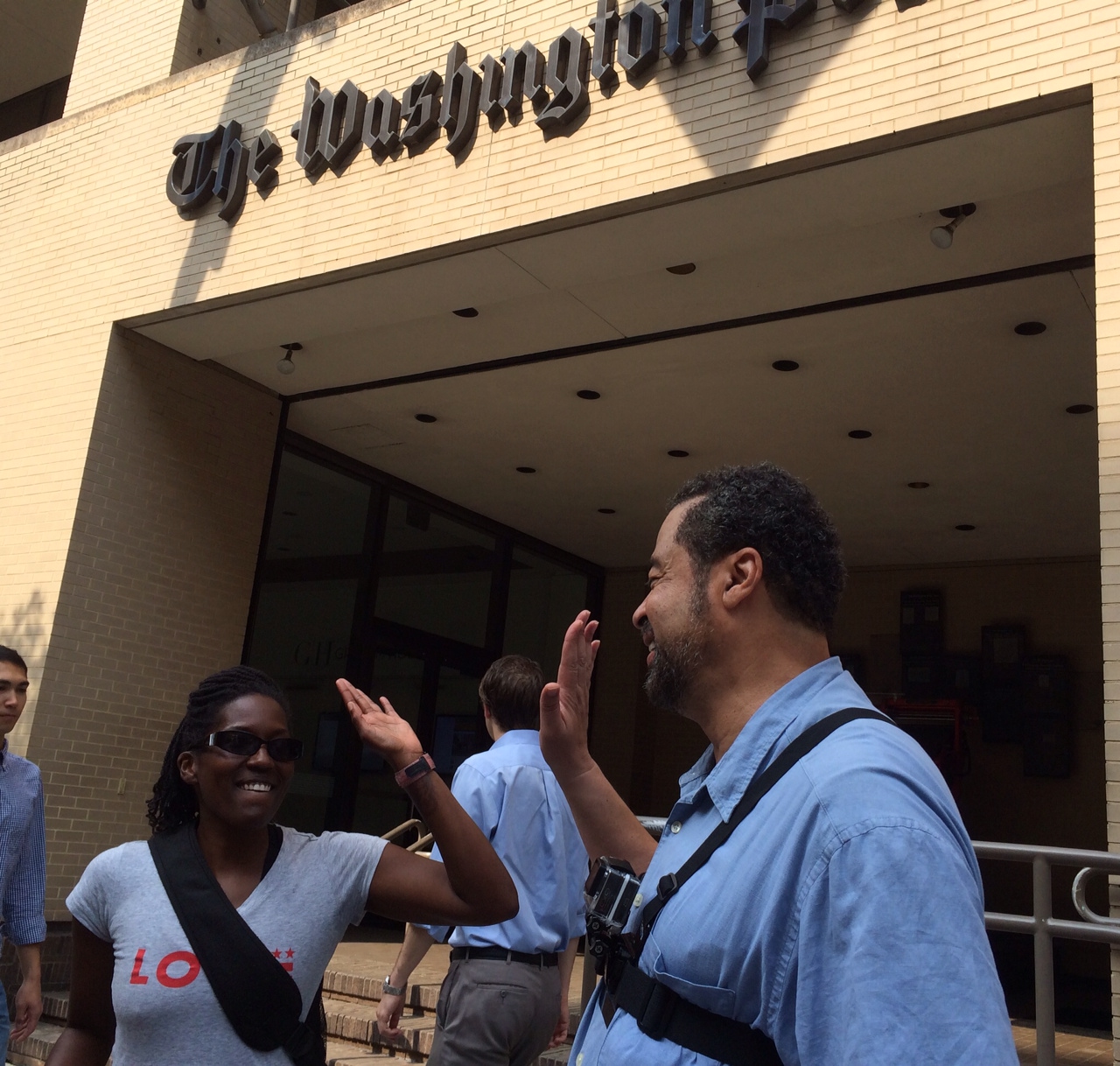
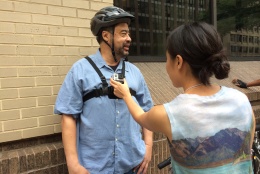
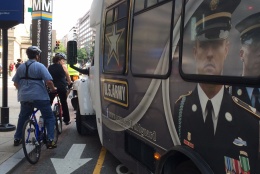
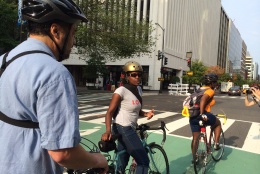
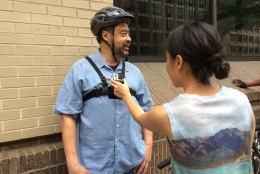
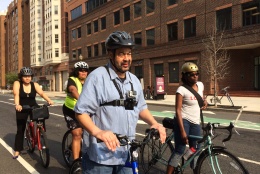
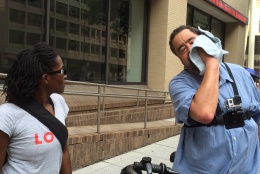

WASHINGTON — Just last month, he called the cyclists who cut across downtown D.C. “terrorists.” He even suggested their behavior could be so egregious that some drivers might find it worth their while to pay a $500 fine to hit one.
So what was Washington Post columnist Courtland Milloy doing taking a bike ride with a group of these people Friday morning? He was taking Veronica O. Davis, co- founder of Black Women Bike D.C., up on her challenge to see what it’s like to ride a bike in downtown D.C.
He would, in effect, bike a mile in her path.
Friday morning Milloy got on his Bianchi, popped on a helmet and met up with Davis, several members of her cycling group and a WTOP reporter to ride through downtown D.C.. The plan was to stick to bike lanes and cycle tracks in the area.
“The goal is to give Mr. Milloy an opportunity to ride in D.C.” and see the challenges that riders face, said David. “Even when there are bike facilities” such as bike lanes and cycle tracks.
Milloy made it clear he had prepared to be “street legal” for the ride.
Adjusting his bike’s rear light and fumbling with the straps to his bike helmet, he said, “This is great — if I can only figure out how to get this helmet on.”
He brought along his riding buddy, Phillip Dixon. The two had just taken a ride on the Mathew Henson Bike trail the day before.
Davis and BWBDC member Allyson Criner Brown — who is also a licensed certified instructor with the League of American Bicyclists — outlined the route the group would take and stressed that cyclists were to remain single file, follow the rules of the road, and stay alert for things like construction, turning cars and more.
Along the route, Milloy asked how it was that cyclists and drivers were supposed to know where to position themselves in and near the green painted bike boxes, or who had the right of way though areas known as “mixing zones”, those broken lines that allow cars to slide across the bike lane from the center to make a left turn.
“I take away that it was fun to ride with people who know how to ride,” said Milloy after the ride. Things went smoothly he said, ” because I was right on their back wheel — and it was great.”
But the Post columnist said the road signage and markings were confusing to cyclists as well as drivers.
“If I had to think through every one of these things and guess…my instincts would not have me doing any of the things they did.” Milloy explained he was referring to Davis and the members of BWBDC along for the ride.
Milloy gave Davis and her riding companions points for following the rules of the road, and helping make their intentions on the road clear, but insisted that they were not typical of riders in the downtown area. “What I’ve seen today helps explain why bikers sometimes act so crazy.”
Milloy added was asked if the experience of riding through rush hour traffic had changed his perception of cyclists. “Fundamentally no, it has not changed” he said. What about having to dodge car doors being opened into the path of his bike, or having to squeeze past trucks and cars parked in the bike lanes, did he see things from the cyclists point of view? No, he said. “What has changed is that I know for SURE that I don’t belong out here on a bicycle” because it’s too confusing to move through the different traffic patterns.
Milloy said “I don’t know what I’m doing out here, just like most of these bikers out here.”
The Washington Post columnist repeated his belief that cyclists “do what they want” on area roadways, without regard to safety: their own, or anyone else’s.
“There are some really mean bikers out here.”
But when Davis and her group objected, he added quickly “I’m not saying it’s you, I’m not saying it’s you.”
Overall though, Milloy indicated his perception of cyclist behavior remains negative.
Davis challenged him about his image of Washington’s cyclists
“We saw two cyclists doing the wrong thing, two.”
Milloy responded, “That’s what you saw.”
What he saw, he told Davis, was cyclists who demonstrated “the potential” for doing the wrong thing.
Davis likened that attitude to a cop profiling a young black man.
Milloy says cyclists, like many Washingtonians, seem to think they are “special” and act entitled. In an aside, he lay the blame at the feet of the GOP.
“If bikers want to get out in here and mix it up with cars, there’s some things that need to be done.”
Among them, Milloy said, is having bikes registered at the local DMV, just like cars. He suggested bikes should have license plates that should be lit so that they could be seen at night.
“If we’re going to play ‘rules of the road apply to everything’ then let’s do it,” he said.
Phillip Dixon, Milloy’s cycling companion said his eyes were opened a bit after the ride.
“I agree 100 percent that it’s only going to work if everybody plays fair,” said Dixon. “But we’re talking about people, and name me one thing in life where everybody always plays fair.”
Dixon did enjoy the relative safety of the protected bike lanes in the downtown. But driving where there aren’t lanes was “crazy” he said.
After a healthy exchange on the sidewalk outside the Washington Post Friday, Milloy and Davis agreed on one thing: The changing infrastructure of area roadways is a work in progress.
Davis pressed Milloy to think about suggesting changes to the DC Department of Transportation (DDOT) and Milloy left saying he had enjoyed his ride with a group of cyclists who followed the rules of the road, exercised common sense and extended common courtesy.
“The reason Veronica issued this challenge is because she represents the nice bikers. And I appreciate that.”
Milloy described Davis and her riding companions as courteous and nice, qualities he insisted were lacking in most people biking in the District.
Before parting ways after the rush hour ride, Milloy repeated, “So few cyclists seem to know that the same rules of the road apply” to them.
WTOP’s Kate Ryan contributed to this report.
Follow @WTOP on Twitter and WTOP on Facebook.

